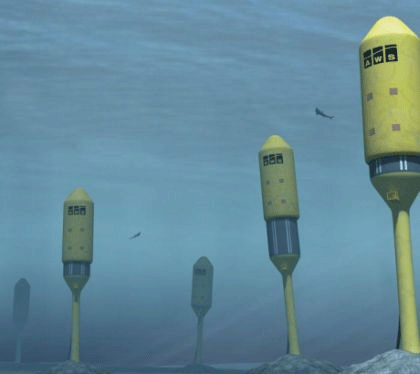While we tend to think of buoys as devices that float on the water and serve primarily as ship markers, over the past few years a number of different countries and business have been attempting to develop models that can harness the power of waves (see here and here for two recent examples). AWS Ocean Energy, a British company, has now brought a twist to the formula by building an underwater buoy that can harness wave energy from 50 meters below the surface.
The buoybu is able to harness wave energy at a distance through the changes in pressure produced by waves increasing and decreasing the water column. This occurs when a wave passes over a buoy at the surface, causing the local water pressure to rise and the upper half of the device to sink. In between waves, the water column decreases, returning the water pressure to its normal level and causing the upper half to go up again. This pressure change is converted into electricity which can be fed into a power grid.
Simon Grey, the Managing Director of the company, said "A town with 55,000 inhabitants would need half a square kilometre of seabed covered with 100 buoys to power it." He believes the buoys could effectively be deployed in the North Atlantic, from Scotland to Portugal, along the US Pacific shoreline, along the coast of Chile or even in South Africa and New Zealand (the Mediterranean's waters are too calm to provide enough wave energy).
AWS Ocean Energy plans on anchoring its first five test buoys to the seabed in a test site off the Scottish coast next year and hopes to see them widely implemented in the UK soon afterwards.

